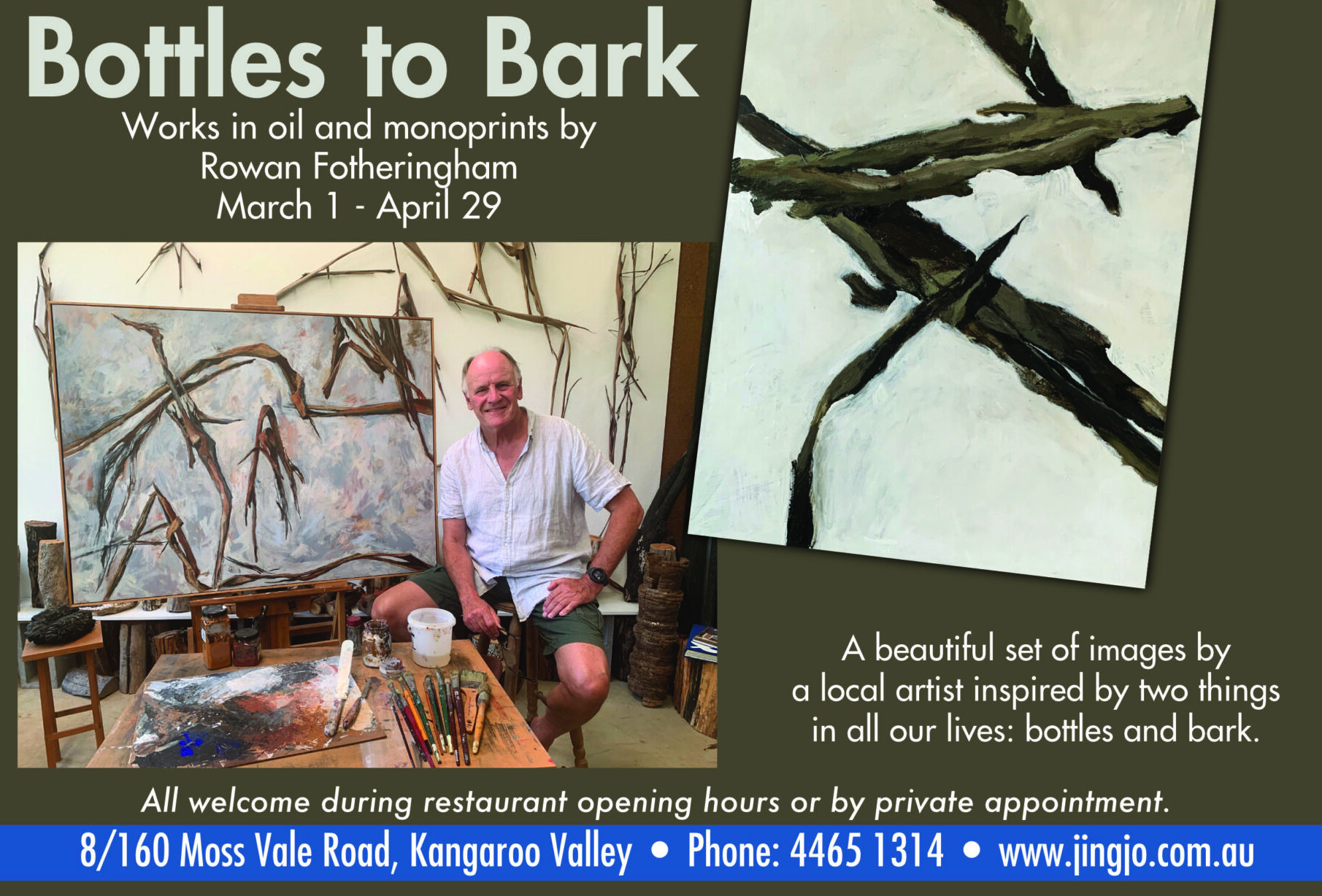The True History of the Kangaroo Valley Historical Society
Introduction
At the meeting of the Kangaroo Valley Historical Society on 11 November 1986 the late Mrs. Edith Vance-Chittick presented a detailed outline of the beginnings of the Historical Society. Below are extracts from this presentation. Edith’s information was gathered first-hand as she was married to Wes Vance and after Wes died she married Archie Chittick. Wes and Archie were both greatly responsible for establishing the Society.
Association with K.V. and A & H Association
Both Wes and Archie were involved with the A & H Association and both passionate about history, especially regarding Kangaroo Valley, the beautiful town where they both grew up. A motion was presented by Archie Chittick at an A & H meeting in 1951 “That an Historical Society be formed to preserve our local history”.
History Book
Archie’s motion was accepted. Interest continued to grow to the point when it was decided to have a ‘History Book’. It was also agreed that this should be launched at a special gathering such as a ‘Back to the Valley Week’.
William Bayley (Bill) wrote the first edition of ‘Kangaroo Valley NSW’ in 1953. Bill was a retired schoolteacher and Fellow of the Royal Australian Historical Society and well known for his many ‘local’ histories. The Society later approached John Griffiths to write a book called ‘A History of Kangaroo Valley’ which has been a huge success and was launched in June 1977.
Back to Kangaroo Valley
Bayley’s book was ready for the ‘Back to the Valley Week’ and Bill Bayley’s book sold like hot cakes for 5/- each. Held from 10th October to 17th October 1953, the week was a huge success and the local folk got behind it – absolutely amazing. They worked really hard to make the whole week of festivities a time to remember. There were entertainments every day and night. It was great to see so many ex-residents and to renew many acquaintances and friendships.
After the Big Bang
For two years the Historical Society had been under the wing of the A & H Association, but now we were established in our own right. The book was selling fairly well; people who had lent money to assist its production had been repaid but we kept an interest by having a ‘picnic-type’ of gathering annually at various localities such as Bendeela, Upper River, Beaumont, Wattamolla, in the Village and Glenmurray Crossing. These continued from 1954 to 1972.
Nugent House
By this time we had established Nugent House, a building that had been part of the ‘Nugent Store’ which became available to us. The red tin building we acquired with a room, which was the second Post Office in Kangaroo Valley, was prepared for a museum. It was ‘manned’ voluntarily at week-ends by the six Nugent House ladies who gave wonderful service to the Society.
The Nugent House Museum was opened in January 1969 by Mr and Mrs Ainsworth Harrison, the people who gave us the sun-dial. The old museum was very popular but far too small for all the exhibits we had. Eventually it was bursting at the seams.
Present site of the ‘Pioneer Farm’
Meanwhile thought was being given to acquiring a piece of land adjacent to the Hampden Bridge, a ‘dream’ of both Wes and Archie.
The area was originally the local Pound Yard which was occupied by the Department of Main Roads (DMR). About this time, in 1970, the Water Board and Hydro Electricity Commission had commenced work on the Tallowa Dam and Bendeela Pumping Station. In those days Kangaroo Valley was a very busy and populous place.
Interview with Tom Lewis
So that was the scene when a few members of the Society, under Archie’s chairmanship, had an interview with Mr Tom Lewis, a state MP, to try and get the DMR site. Tom Lewis in those days was the Minister for Lands and later he was State Premier. Finally, the DMR moved to a much better equipped site on Bendeela Road.
Resumption of land at Bendeela
The Water Board was resuming farms down in the Bendeela area. We heard that the old Rendall home was to be bulldozed or allowed to collapse with age and the elements. Discussions between our representatives and the Metropolitan Water Board achieved the outcome where we were given the buildings to pull down and re-erect on the existing park site. The Rendall homestead was the only building available of an era suitable for a museum piece.
The Museum Park Trust
In May 1971 the Historical Society was requested to nominate seven of its members to form a Trust to administer the site and the buildings to be erected on it. At this time the Trust was named ‘The Hampden Bridge Museum Park Trust’.
Additional to its responsibility for the upkeep and control of all buildings and grounds, the Trust was empowered to employ a person or persons to be answerable for the day-to-day management of the reserve and accountable for the receipt of admission fees and custody of all exhibits.
The Trust was to be a totally separate body from the Historical Society, which owns all the artefacts on display. But from the outset it was clearly understood that the interests of the two bodies were the same and there would have to be close collaboration between them. In the early days this was secured by the fact that all members of the Trust were also members of the Society.
January 1973
In January a ‘Museum Park Appeal Fund’ had been opened under the chairmanship of John Griffiths. The fund raised $12,146 in about 12 months. The money raised was used to pay many of the debts incurred mainly to establish the park.
It took most of 1973 to move objects from Nugent’s Store to the museum site as well as add additional donated artefacts. There were many thousands of exhibits. Installing them in an appropriate fashion in the new setting was a huge job.
Museum Park opening day
The official Opening Ceremony was on 10 November 1973 and was performed by the Honourable Tom Lewis, MLA and Minister for Lands. Mr Lewis announced that the Lands Department was in the process of acquiring land over Tanner’s Creek at the cost of $14,000 and an area of 21½ acres was offered to the Trust as an extension to the Park. Further grants were also offered.
Other indispensable help in the foundation and development of the park was received from Citra Constructions, Leighton Contractors and the Snowy Mountains Authority. The contractors not only contributed handsome donations but lent us heavy equipment in particular the time we bought the 25 ton Fossil Rock to the park.
Historic site established
With great help from these sources, together with the tremendous effort from our local community, the historic settlement was established.
In 2023 the Kangaroo Valley Historical Society is planning to celebrate the 70+ years we have preserved the history of the Kangaroo Valley community and surrounds, and also 50 years of operating the Kangaroo Valley Museum. The date will be in early November. Keep an eye out – we plan to make it BIG.
Christine Murphy




